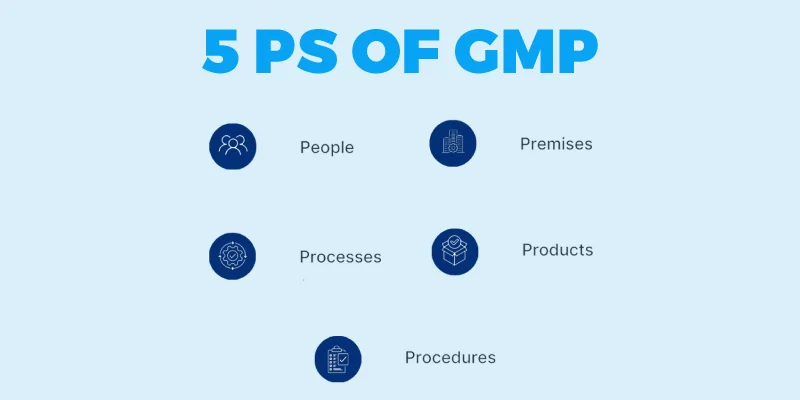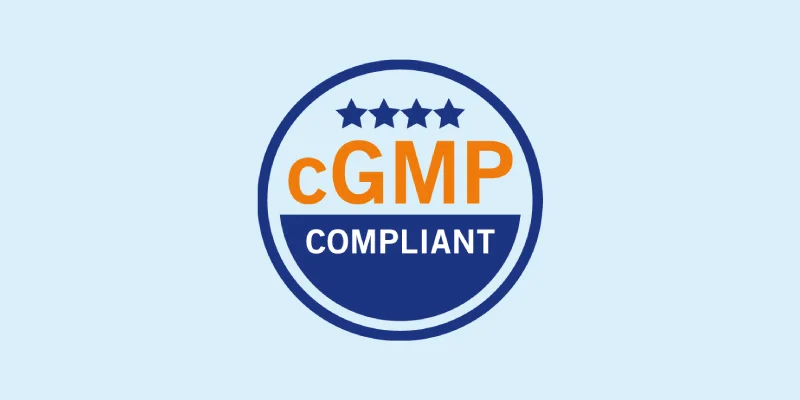An Ultimate guide on GMP Audits for product quality and compliance

August 23 , 2024
GMP audits are critical for manufacturing industries such as food and beverage, cosmetics, and pharmaceuticals. They assess whether production processes fulfill quality standards.
The business staff itself does the audits or independent experts. They ensure that things are produced safely for usage. This enables businesses to follow rules established by bodies such as the FDA. Audits identify areas for improvement while keeping everything lawful.
In this article, we’ll look at the five major components of GMP audits, their benefits, the best ways to conduct them, and how the UrAudits inspection app can help you prepare. In addition, we will provide complimentary checklists that you can personalize to help your internal GMP audits run smoothly.
What are GMP Audits?

A GMP audit resolves if a production system appreciates Good Manufacturing Practices (GMP) policies. These regulations make certain that product manufacturing processes meet high-quality standards. The audit entails preparing, calling a meeting, gathering information from papers and interviews, seeing personally, and drafting a report on past discoveries.
There are two GMP audit types:
- Third-party audits: Independent auditors or third parties do this to determine whether a company fulfills GMP standards.
- Internal audits: Internal staff perform these to identify and resolve faults in the manufacturing process with quality or compliance before they produce major problems.
Are GMP audits crucial?
GMP audits are a must for industries held by health authorities, such as the FDA. Noncompliance with GMP constraints can have big effect like product recalls, fines, and reputational harm.
Length and Rate of GMP Audit
The length of the building and the scope of the inspection decide the length of a GMP audit. It can stay for a few days or weeks.
However, companies conduct laborious internal GMP audits once a year, which can vary relying on the rules, the complexity of the activities, and the faults found during earlier audits. Outside entities do the external audits less often, every two to three years, or as required by certification or standards.
Conducting minor internal inspections more often is a good idea to ensure that GMP guidelines are followed every day.
Primary Units of GMP Audits
During a GMP audit, essential factors checked include:
- Validation of confirmed critical production procedures.
- Performance of checking how quality control actions.
- Examining how to keep the documents and records.
- Addressing the concerns and product recalls.
- Verifying the equipment and people qualification.
5 Ps of GMP

The five Ps of GMP audits manage primary areas that are vital for quality and safety in manufacturing:
1. People: Staff must be well-trained for their jobs, follow hygiene guidelines, and use protective equipment such as hair nets and gloves. Handwashing and sanitation facilities must also be provided.
2. Processes: This comprises providing personnel with clear instructions and rules for maintaining safety and quality standards. Examples include HACCP and other food safety measures.
3. Procedures: Standard operating procedures (SOPs) should describe how to carry out duties. Maintenance of records to demonstrate the follow-up procedures. This involves reporting any changes, laboratory test findings, consumer complaints, and other relevant details.
4. Products: This contains tight control over how products are manufactured, labeled, handled, and stored to assure consistency and safety for usage.
5. Premises: This assures that the buildings and grounds are clean and well-maintained. Proper waste management, as well as adequate lighting and ventilation systems, all contribute to contamination prevention and environmental safety.
What are the GMP Audits’ nine pieces?

Now, discuss the nine pieces of a GMP audit, emphasizing their worth and how they contribute to keeping high-quality standards.
1. Personnel: Ensures personnel are healthy, well dressed, and follow hygiene guidelines. Review training and supervision to ensure that everyone understands the GMP standards.
2. Warehousing and Distribution: Examines how products are stored and moved to guarantee proper handling and circumstances that preserve product quality.
3. Processes and Controls: Evaluate measures to prevent contamination during production, such as raw material handling, cross-contamination prevention, and packaging.
4. Sanitary Operations: Confirms the cleanliness and maintenance of facilities and equipment, including cleaning processes, chemical storage, and pest control efficacy.
5. Sanitary Buildings and Control: This unit specifies the existence and condition of sanitary amenities like plumbing, water, and waste disposal systems to control pollution.
6. Equipment and Utensils: Assures that equipment and utensils are cleaned and maintained to avoid infection. The materials used must be safe and resistant to corrosion.
7. Defect Action Levels: Procedures for addressing and correcting product problems to prevent substandard or contaminated items from reaching customers.
8. Plant and Grounds: Examines cleanliness, facility exterior maintenance, trash management, and pest control to avoid any potential hazards to product safety.
9. Handling of By-Products: Store and handle by-products meant for animal consumption alone to avoid contamination and distinguish them from rubbish.
Best Practices for Preparing for a GMP Audit with UrAudits inspection app

Preparing for GMP (Good Manufacturing Practices) audits can be challenging due to the detailed rules requiring strict follow-up.
By chance, solutions such as the UrAudits inspection application may help make the process easier and more efficient.
Here’s a simple guide on how to get ready for a typical GMP audit using the UrAudits inspector app.
Initial Steps and Team Preparation
Scan prior audit outcomes and FDA inspections to pinpoint areas that need correction. This should cover all operations, even those that are outsourced.
Create a clear audit strategy with dates and give specific duties to your team members so that everyone understands what they need to complete.
Ensure that all contracts and paperwork are prepared and accessible.
Using a digital solution such as the UrAudits inspection app allows for a clear record of previous audits, making examining previous findings and actions simple.
Document Preparation and Accessibility
Ensure that any documents required for the audit, such as manufacturing methods, quality control reports, and training manuals, are well-organized and accessible.
UrAudits inspection app allows you to digitally keep all of these crucial documents in the cloud, making them accessible from any device. This saves time during the audit because you don’t have to seek physical papers and verify you always have the most recent versions on hand.
Creating SOPs and Audit plan
Develop Standard Operating Procedures (SOPs) with a clear, detailed audit plan. This should specify the audit’s scope, such as geographical locations, organizational units, actions, and processes. The plan should also define the audit team members’ schedules, duties, and obligations to all parties involved. UrAudits’ digital auditing app enables you to develop and change SOPs on the platform.
Conducting Internal Audits
Conduct internal audits to verify that you comply with GMP requirements before the external audit. These audits should include personnel training, equipment, and facilities to assist you in finding non-conformances and spots for refinement. This practice familiarizes the team with the audit process, which helps the external audit operate more smoothly.
UrAudits inspection application simplifies internal audits by providing configurable checklists, real-time data collecting, and quick report preparation. It allows you to identify concerns and follow trends to prepare you for the official GMP compliance assessment.
Implementing Changes and Continuous Improvement
After recognizing non-conformances, submit a corrective action request (CAR) to report each problem and allot duties. Tracking up on these actions is vital to verifying their implementation and maintaining compliance. Regular updates and monitoring of the effectiveness of remedial actions demonstrate your dedication to GMP compliance and ongoing improvement.
The UrAudits inspection app allows you to assign corrective actions, set deadlines, and track progress in real-time. It ensures that all corrective activities are documented and executed within the stated time frame.
Try our inspector app for Android or iOS for your GMP Compliance for FREE.
UrAudits auditing app is straightforward to use! Sign up for a complimentary 14-day trial (they’ll even scan your checklists for free!). Otherwise, schedule a personalized experience with one of their experts—book a demo today.
What are the Advantages of GMP Audits?
GMP (Good Manufacturing Practice) audits offer numerous major advantages:
Improved Product Quality
These audits reveal opportunities for improvement in processes, equipment, and staff habits, resulting in higher product quality. They also contribute to consistent production standards for safety and efficacy.
Enhanced Compliance
GMP audits assist organizations in complying with regulatory requirements. They can lower the risk of legal challenges and fines, which is critical in the pharmaceutical industry, where noncompliance can lead to severe effects, such as legal action or product recalls.
Improved Efficiency and Cost Savings
GMP audits can identify inefficiencies and cost-cutting opportunities. They can better the manufacturing process which in turn decrease waste.
Customer Confidence
Regular GMP audits and compliance with standards can increase client trust and confidence. Consumers choose products from organizations that stand for high quality and compliance.
Employee Awareness and Training
GMP audits improve worker understanding of compliance and quality issues and their knowledge of standards and regulations. This can result in a more dedicated workforce that recognizes the value of their job in confirming product quality and compliance.
What are CGMP audits?

The abbreviation of CGMP is Current Good Manufacturing Practice. CGMP audits are influential in the pharmaceutical sector. They inspect manufacturing facilities to confirm that they comply with the most recent standards established by authorities such as the FDA. These audits examine the production process, from raw material procurement to finished product, to eliminate contamination, errors, and low-quality products. This promotes patient safety and ensures constant product quality.
What Is the Difference Between GMP and CGMP?
Both GMP and CGMP establish production standards. The distinction is that CGMP includes the word “current,” which means that producers must apply cutting-edge technologies and processes to ensure product quality and safety. CGMP regulations are flexible, allowing businesses to use the best methods that fit their specific processes.
Importance and Implementation of CGMP Audits
CGMP audits do more than verify compliance; they also evaluate the quality culture in manufacturing facilities. These in-depth audits encompass everything from manufacturing process design and monitoring to product uniformity and quality control measures.
CGMP audits assist pharmaceutical businesses in establishing a formal control system to minimize contamination, mix-ups, and errors while also assuring drug products satisfy quality standards.
A digital solution like the UrAudits inspection app can help you prepare well for GMP audits. It improves document management, provides quicker access to information, and simplifies the process of performing internal GMP audits and managing remedial actions.
UrAudits inspection app for Android or inspection app for iOS is useful for tablets and works offline. Your team captures every piece of information fast, speeding up the audit process.
Also, in addition to food standards, we cater to multiple industries, and UrAudits is available as an audit app for home care, construction, healthcare, and automotive.
Copyright © 2024 Uraudits.com. All Rights Reserved. Privacy Policy | Legal | Terms of Use
Privacy Overview
| Cookie | Duration | Description |
|---|---|---|
| cookielawinfo-checbox-analytics | 11 months | This cookie is set by GDPR Cookie Consent plugin. The cookie is used to store the user consent for the cookies in the category "Analytics". |
| cookielawinfo-checbox-functional | 11 months | The cookie is set by GDPR cookie consent to record the user consent for the cookies in the category "Functional". |
| cookielawinfo-checbox-others | 11 months | This cookie is set by GDPR Cookie Consent plugin. The cookie is used to store the user consent for the cookies in the category "Other. |
| cookielawinfo-checkbox-necessary | 11 months | This cookie is set by GDPR Cookie Consent plugin. The cookies is used to store the user consent for the cookies in the category "Necessary". |
| cookielawinfo-checkbox-performance | 11 months | This cookie is set by GDPR Cookie Consent plugin. The cookie is used to store the user consent for the cookies in the category "Performance". |
| viewed_cookie_policy | 11 months | The cookie is set by the GDPR Cookie Consent plugin and is used to store whether or not user has consented to the use of cookies. It does not store any personal data. |









